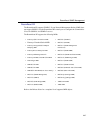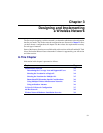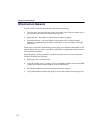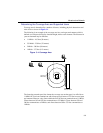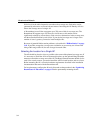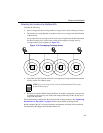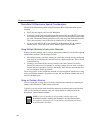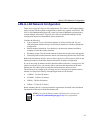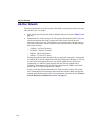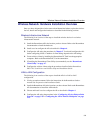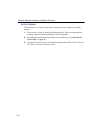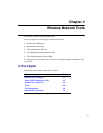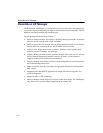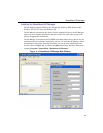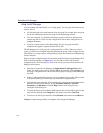
3-7
LAN-to-LAN Network Configuration
LAN-to-LAN Network Configuration
There are two types of LAN-to-LAN configurations. The LAN-to-LAN Endpoint Bridge
mode is used in a Point-to-Point configuration to connect two separate wired LANs. The
LAN-to-LAN Multipoint Bridge mode is used in a Point-to-Multipoint configuration to
connect multiple wired LANs. Typically, the LANs are in different buildings and the
configuration requires the RoamAbout outdoor antenna kit.
Consider the following:
• Type of antenna. Use two directional antennas in a Point-to-Point link. Use one
omni-directional antenna and up to six directional antennas in a Point-to-Multipoint
configuration.
• Outdoor antenna installation. You should use a professional antenna installation
company to install the outdoor antennas.
• Grounding system. The AP and the outdoor antenna must use the same earth ground.
• Connecting of the outdoor antenna to the AP, and connecting the AP to the wired LAN.
Refer to the RoamAbout Outdoor Antenna Site Preparation and Installation Guide for the
detailed procedures to determine distances and install an outdoor configuration.
If you are not using an antenna, the APs should be within each other’s coverage area. The
speed you want to use for your wireless link is one factor that determines the distance
between the APs. Other factors include physical obstructions and noise levels.
The following is an example of the coverage area in a semi-open environment, which is
defined as work space divided by shoulder-height, hollow wall elements.
• 11 Mbit/s - 165 feet (50 meters)
• 5.5 Mbit/s - 230 feet (70 meters)
• 2 Mbit/s - 300 feet (90 meters)
• 1 Mbit/s - 375 feet (115 meters)
Before mounting the AP, review the hardware requirements described in the installation
documentation that came with the RoamAbout AP.
NOTE: Using the AP Density feature will change the coverage area.
See AP Density and Roaming on page 2-8 for more information.
NOTE



